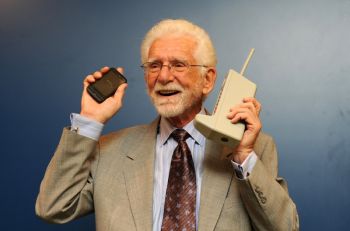Nine Undergraduates Participating in the Spring 2019 Armour R&D Program

Nine Armour College of Engineering undergraduate students and their faculty mentors have been awarded Spring 2019 Armour R&D Fellowships. The program, an Armour College of Engineering Distinctive Education initiative, offers undergraduate engineering students the opportunity to gain hands-on research and development experience in the lab of a faculty mentor.
All nine students funded during the spring term will begin projects for the first time. Students have been selected to participate in the program based on the quality of project proposals submitted. The proposals are reviewed and selected by Natacha DePaola, Carol and Ed Kaplan Armour College Dean of Engineering, and the Distinctive Education Council.
Armour R&D will run for ten weeks, culminating with the Spring 2019 Armour R&D Expo on April 18, 2019. During the Expo, students will share the results of their work through poster presentations.
The Spring 2019 Armour R&D projects are categorized under the four IIT Engineering Themes: Water, Health, Energy, and Security. These themes represent areas in which engineers can create solutions of global impact that advance society.
HEALTH
Mohammed Saleem (BME, 2nd Year) and Kenneth Tichauer, Associate Professor of Biomedical Engineering will start work on their project Enhanced Paired-Agent Fluorescent Optical Projection Tomography to Detect Metastases in Breast Sentinel Lymph Node Biopsy. The agent-dependent early photon tomography (ADEPT) system captures cross sections of metastases that are clinically relevant in finding out whether cancer spread outside the breast via breast sentinel lymph node biopsy. Mohammed will help develop a protocol for post image tissue histochemistry with two-dimensional projections of the specimen at multiple angles. The ADEPT system will provide the first nondestructive and quantitative molecular imaging system. The implications of this project can provide pathologists with the ability to examine a higher percentage of lymph node volumes.
Elizabeth Bremer (ME, 3rd Year) and Marcella Vaicik, Research Assistant Professor of Biomedical Engineering, will start work on their project Phantom development to enable MRI quantitative tissue oxygenation analysis technique optimization. Elizabeth will be designing, building, and programming an actuator that will simulate a beating heart. This actuator will be added to a preexisting phantom and the new phantom will be imaged using MRI and the analyzed to verify that it produces reproducible and translatable results that can be used to detect heart disease sooner and more accurately. The goal of the system is to be implemented into clinical applications that will help to more accurately identify and assess patients with heart disease.
Nazia Aslam (ChE, 4th Year), Kayan Mui Zheng (ChE, 4th Year, and Fouad Teymour, Professor of Chemical and Biological Engineering, will start work on their project Development of an Industrial Prototype Kinetics Hydroponics Sprouting Device. The simple process of sprouting brings out many enzymes in germinated seeds, legumes, and grains, making them easier to digest in human systems, and enhances the bioavailability of nutrients. Compared to their mature plant counterpart, they possess a nutrient density that is one to two orders of magnitude higher. Recent discussions with several sprout growers indicate a need for the development of larger scale devices. Nazia scale up to a 55-gallon system. by designing, analyzing in software simulations, then constructing and testing a prototype sprouting device. Successful implementation of the technology will open an avenue of collaboration with the sprouting industry.
Shanza Riaz (ChE, 4th Year) and Fouad Teymour, Professor of Chemical and Biological Engineering, will start work on their project Development of an Industrial Prototype Kinetics Hydroponics Sprouting Device. The project involves the use of Kinetic Hydroponics (KH) to achieve sprouting. The purpose of this project is to achieve successful scale-up of the technology to the 55-gallon scale. The key component will be to analyze the hydrodynamics of the bench scale device and develop conceptual design alternatives for an air distributor system suitable for the 55-gallon scale. An optimum design will be finalized by evaluating it in COMSOL and the selected air distributor design will be constructed in the IIT workshop, and assembly of the industrial scale device. The device will be made and tested using both broccoli and alfalfa seeds to get sprouts for both products.
Jasmine Baste (BME, 2nd Year) and Abhinav Bhushan, Professor of Biomedical Engineering, will start work on their project Utilizing gut-on-a-chip technology to understand the interactions with drugs and IBD in the colon. A major challenge of treating diseases with pharmaceuticals is that a drug may help many patients but does not work for others. This is the case for inflammatory bowel disorders (IBD). Jasmine will study interactions between the drugs in the colon environment with bacteria before and after IBD and quantify the changes in drug metabolism. Organs on a chip Provide an inexpensive, fast and personalized method for finding drug therapies that are likely to be effective for a specific patient.
ENERGY
Jonathon Wilcox (ChE, 4th Year) and Heng Wang, Assistant Professor of Material Sciences and Engineering, will start work on their project Synthesis of Organic-Inorganic, Hybrid Perovskite Thin-Films for Thermoelectric Applications. The project will be to synthesize a specific material that will allow heat conversion into electricity (thermoelectric properties). Jonathon will work mainly on the synthesis of the material and creation of thin-films so that other members of the team may run tests and end result analyses. Several materials will be synthesized, all with different properties, and tested so they can be compared to other research and previous experiments. Thin-film thermoelectric material is mainly used in solar panel applications but is also used in NASA's radioisotope thermoelectric generators and critical cooling components in avionic.
Erica Acton (AE, 3rd Year) and Mohammad Heidarinejad, Assistant Professor of Architectural Engineering, will begin their project Energy Savings for Radiators Using Building Sensors and Controls. The goal of the project is to reduce the energy needed to operate the steam radiation system in Alumni Hall. We aim to reduce the amount of steam needed to heat the building while maintaining a sensible level of comfort. We plan to do this through the testing of a controls system for the radiators using sensors. We plan to gather various data points to estimate the steam energy consumption. When completed, we will be able to articulate the impact of radiation controls on run-time, comfort, and energy performance. We will be able to change the steam flow of individual radiators based on occupancy type and level. We expect this study to have a significant impact on human comfort in older buildings that have steam radiator systems.
SECURITY
Jillian Edwards (CE, 3rd Year) and Jamshid Mohammadi, Professor of Civil and Architectural Engineering, will start work on their project Mitigation Strategies for Externally Induced Vibrations in Floor Systems. Floor vibrations in buildings is becoming a more complex issue to manage due to the rapid pace of urbanization today. Vibrations caused by railways, construction, and other external sources becomes difficult to control because there is not much provision for this problem in many local and international building codes. By extensively researching methods of vibration control for a variety of floor systems, it is expected that this research will act as a tool that can help engineers and architects as they work towards mitigating floor vibrations in order to provide a safe, comfortable and optimally performing space for the occupants of a building.




